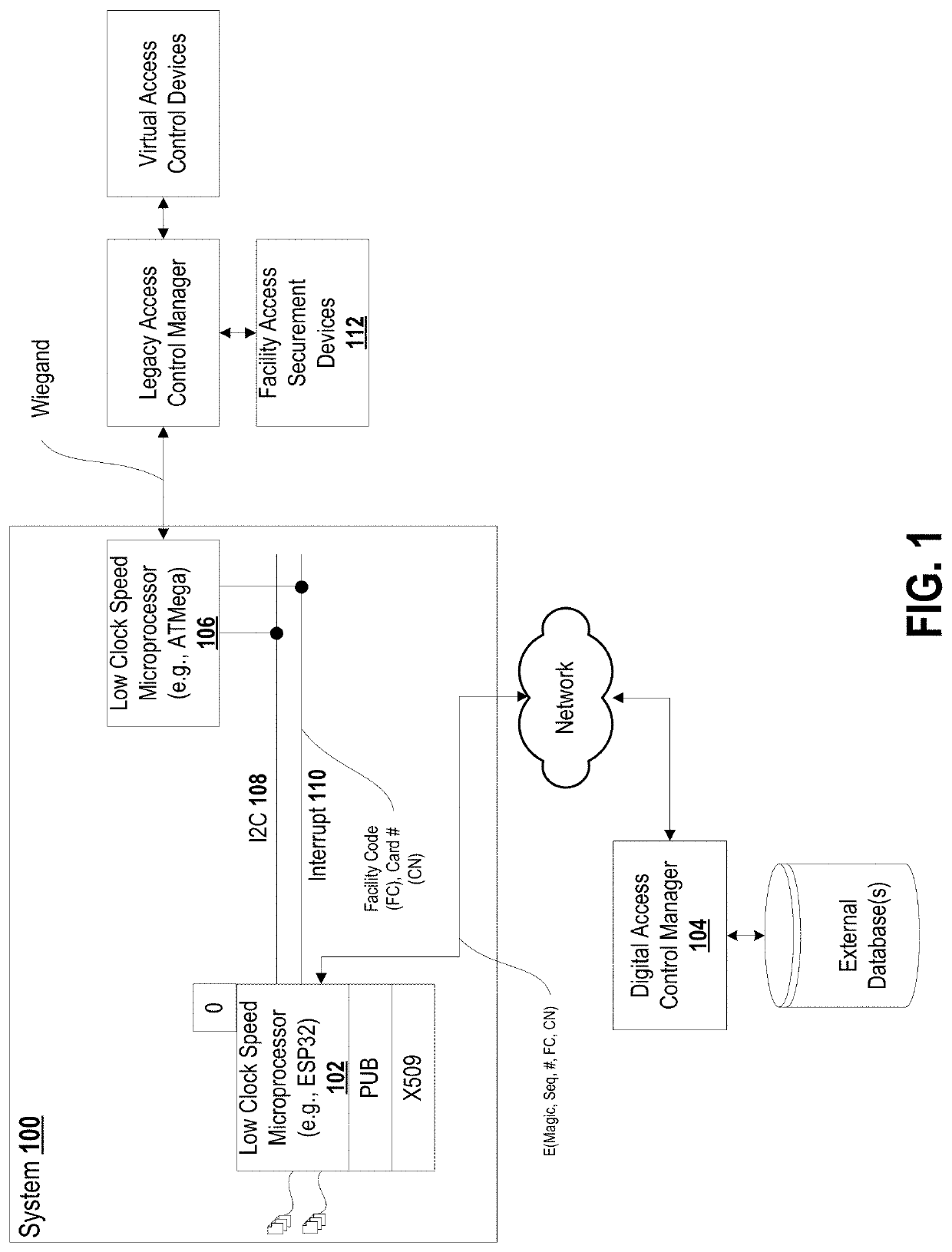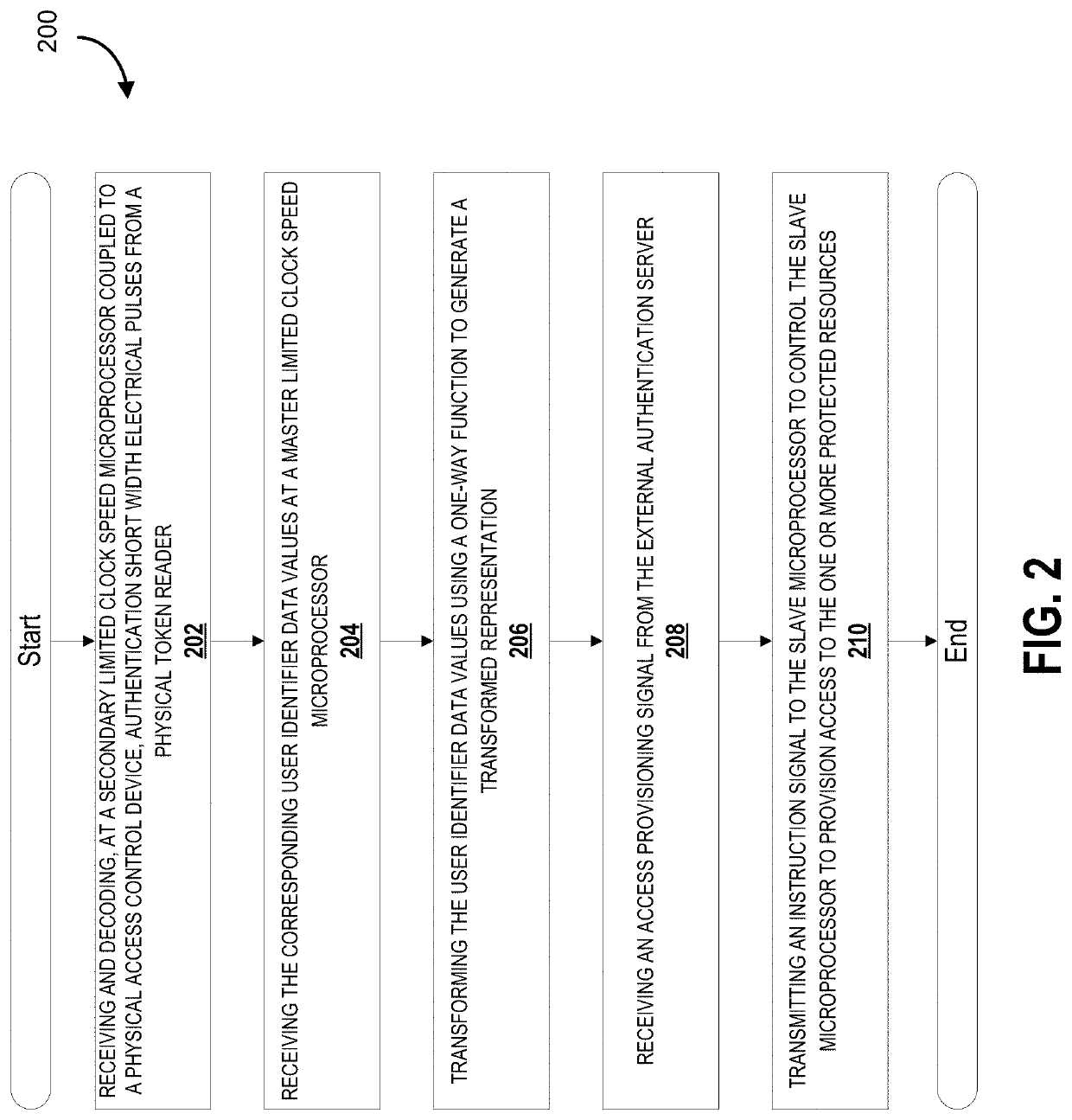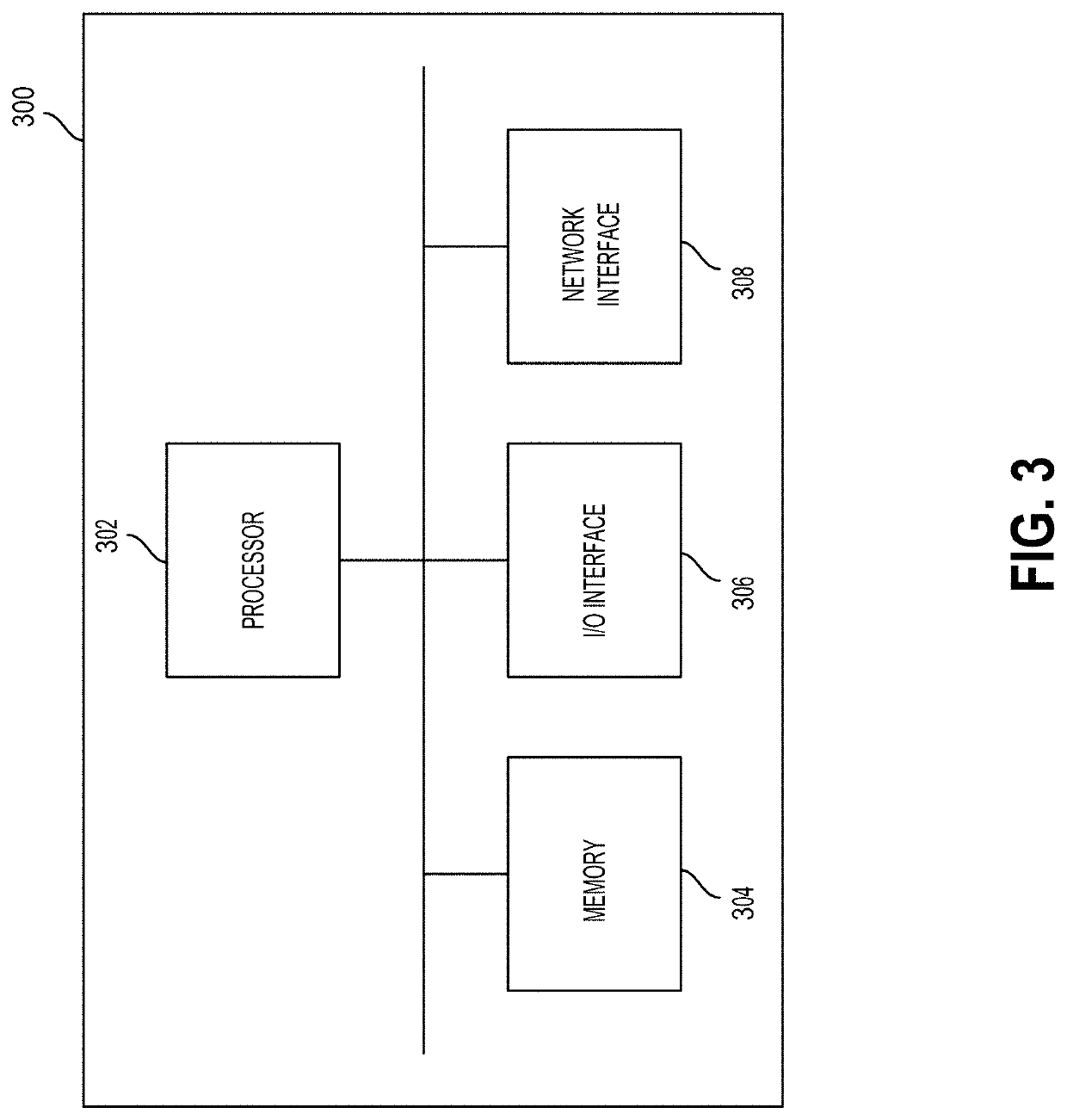Access control system
a control system and access control technology, applied in the field of access control, can solve the problems of significant limitations of the legacy existing approach, the maximum typical operating distance is less than 100 meters, and the upgrade or retrofit is potentially costly, and achieves the effect of improving user profile/security features
- Summary
- Abstract
- Description
- Claims
- Application Information
AI Technical Summary
Benefits of technology
Problems solved by technology
Method used
Image
Examples
Embodiment Construction
[0056]Legacy approaches, whether wired or wireless, suffer from limitations that hamper adoption of traditional physical access-control technologies in modern, distributed corporate environments: (i) authentication of end-users must take place at fixed locations, limiting the ability to utilize traditional physical access-control technologies in mobile applications; (ii) those fixed locations must be in relatively close physical proximity to the other components of the enterprise's access control system, limiting the ability to utilize traditional physical access-control technologies in environments with widely-distributed assets; (iii) most existing signalling mechanisms utilized by access control systems (e.g., dedicated wiring or point-to-point wireless) cannot be monitored or protected with the infrastructure that enterprises typically use to monitor and protect their existing digital networks that connect their other data, digital-security and IoT networks; (iv) existing access...
PUM
 Login to View More
Login to View More Abstract
Description
Claims
Application Information
 Login to View More
Login to View More - R&D
- Intellectual Property
- Life Sciences
- Materials
- Tech Scout
- Unparalleled Data Quality
- Higher Quality Content
- 60% Fewer Hallucinations
Browse by: Latest US Patents, China's latest patents, Technical Efficacy Thesaurus, Application Domain, Technology Topic, Popular Technical Reports.
© 2025 PatSnap. All rights reserved.Legal|Privacy policy|Modern Slavery Act Transparency Statement|Sitemap|About US| Contact US: help@patsnap.com



